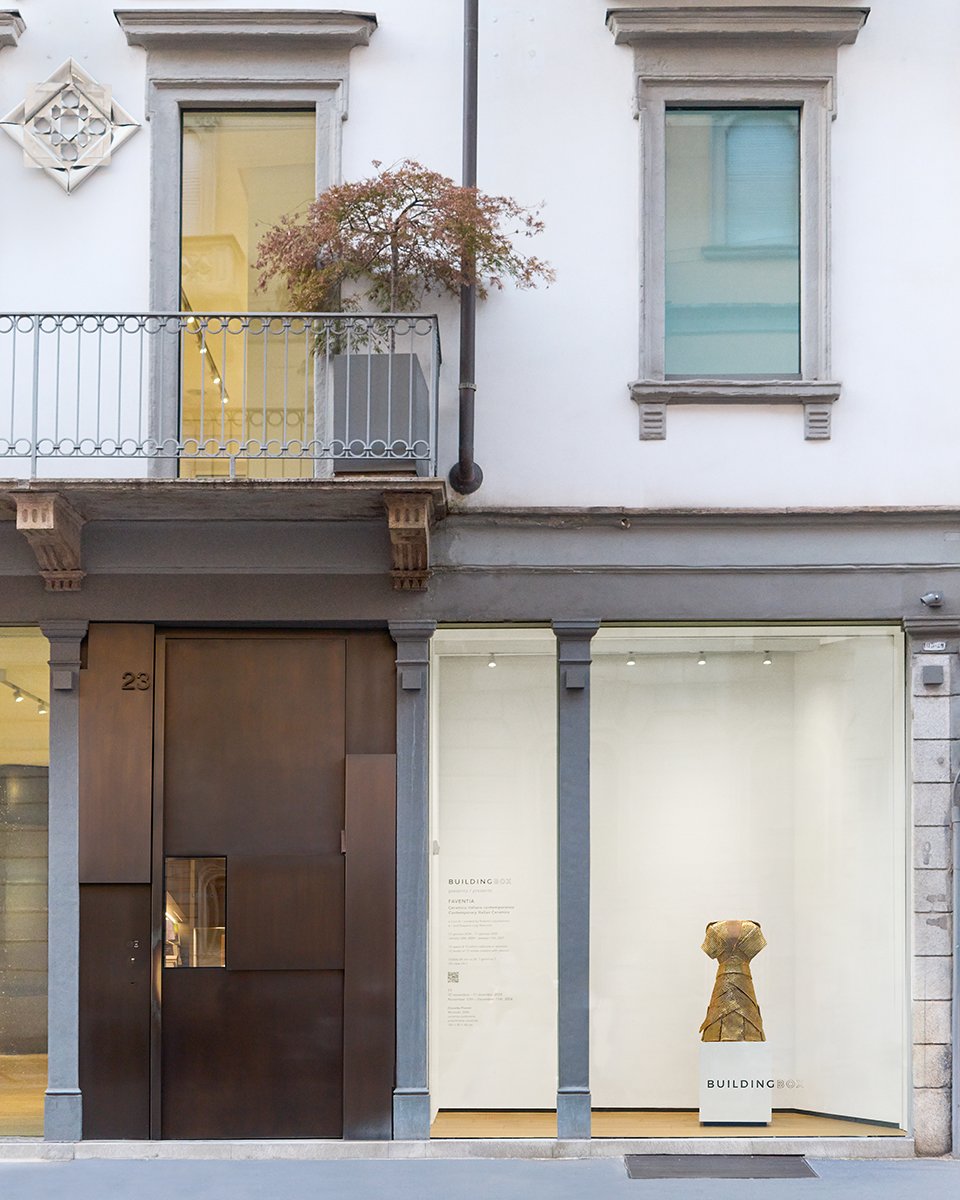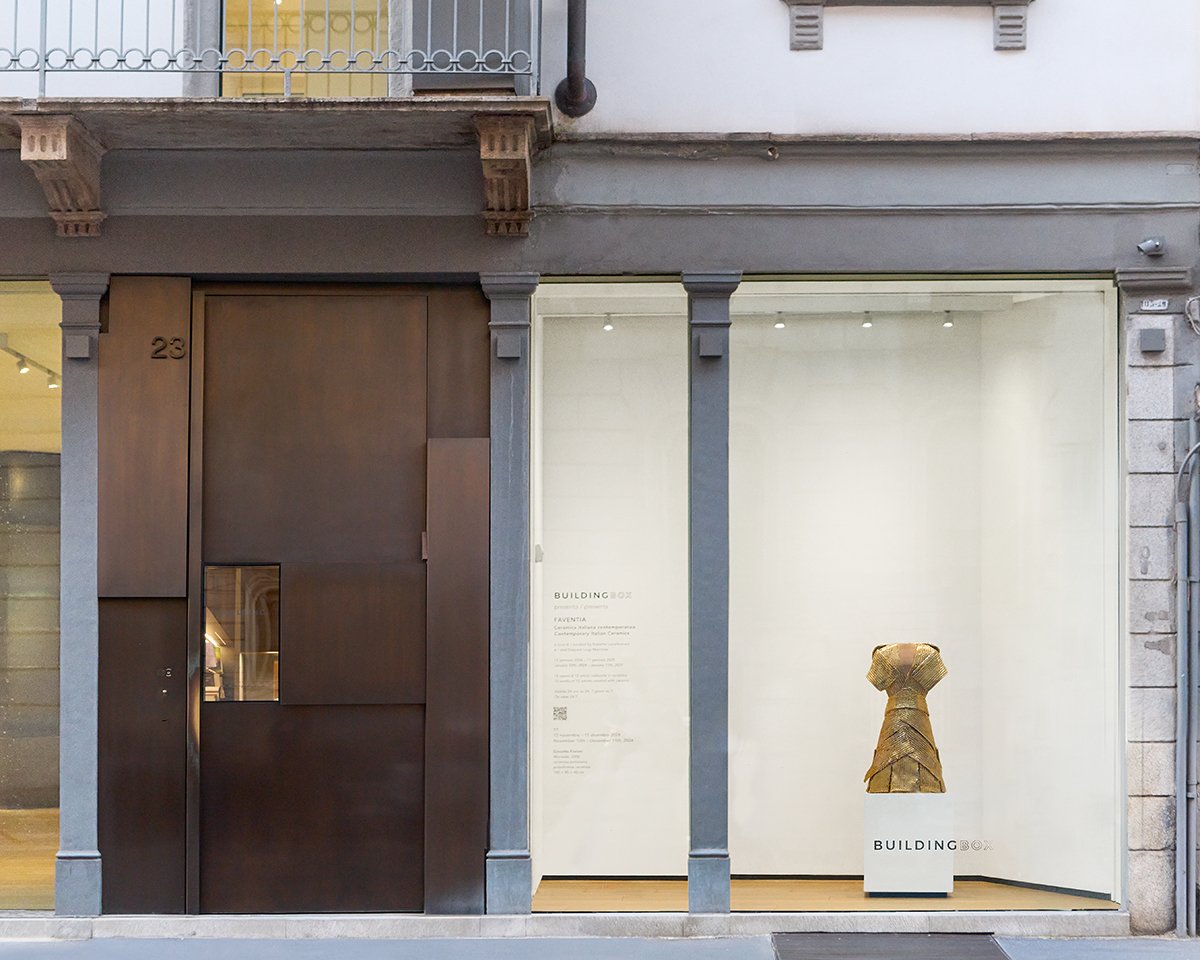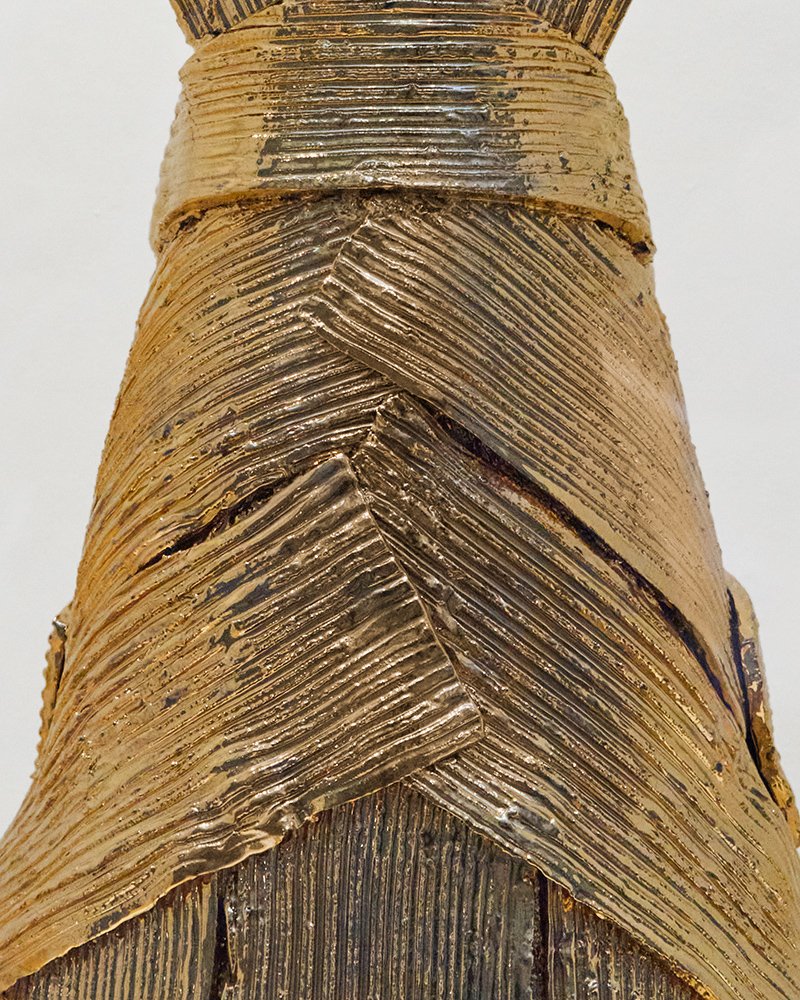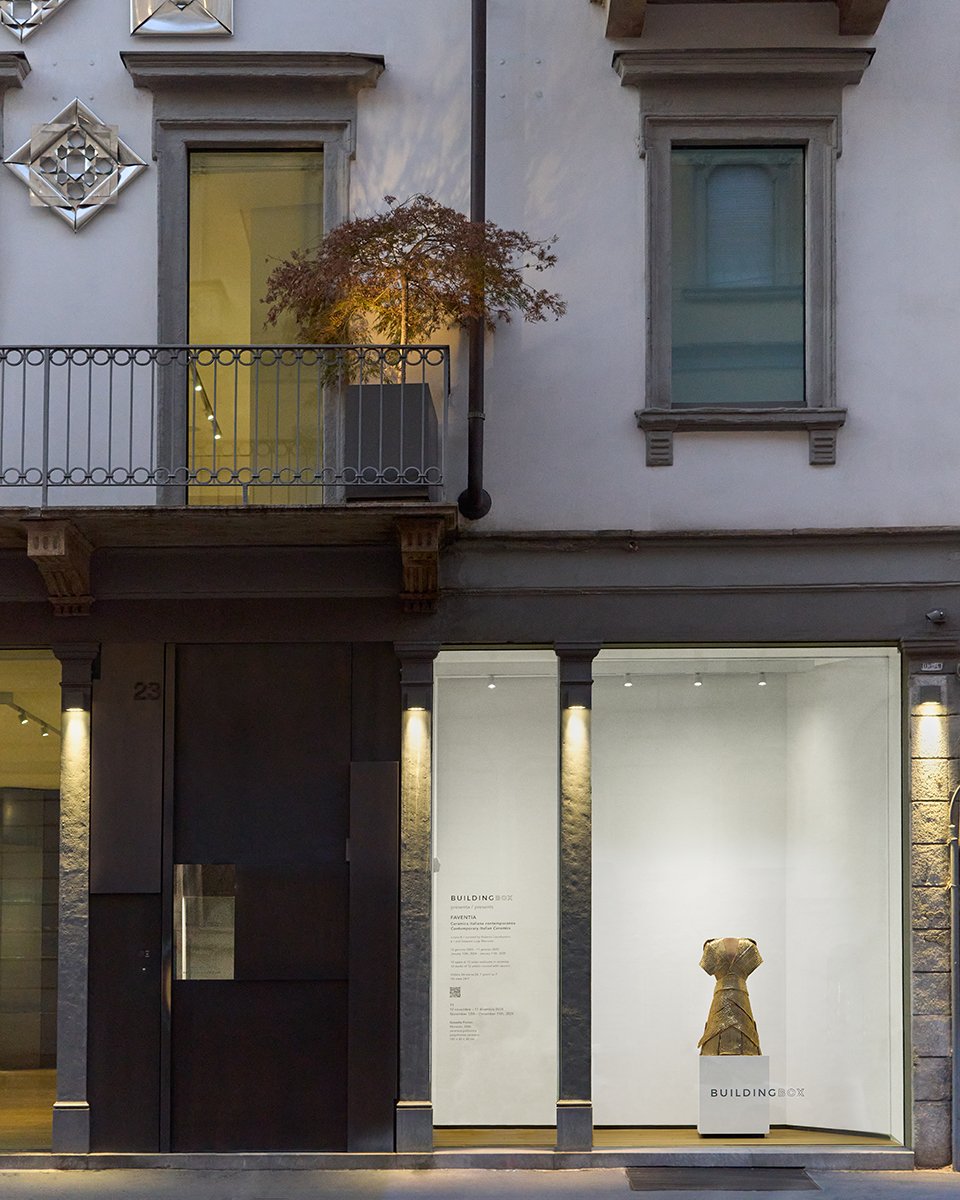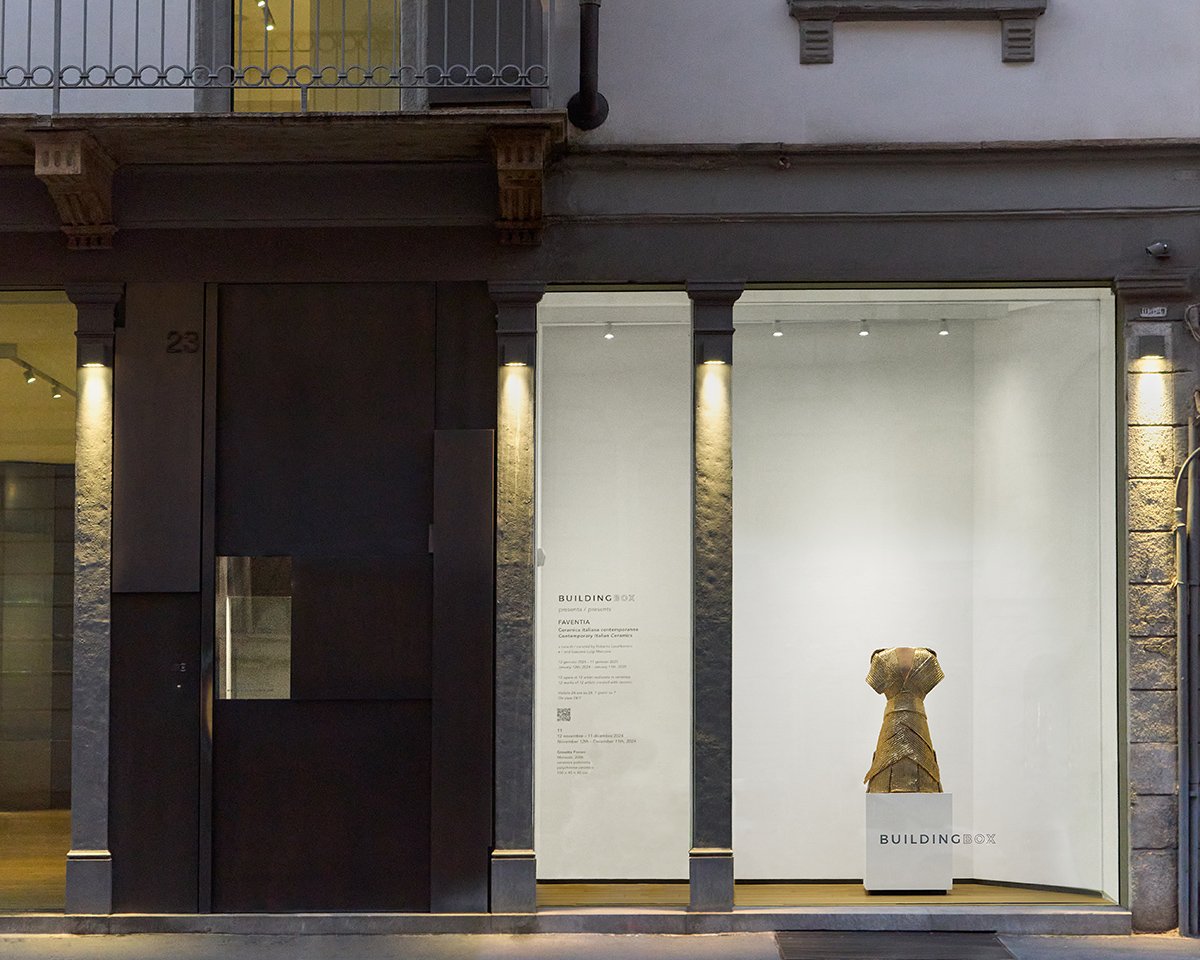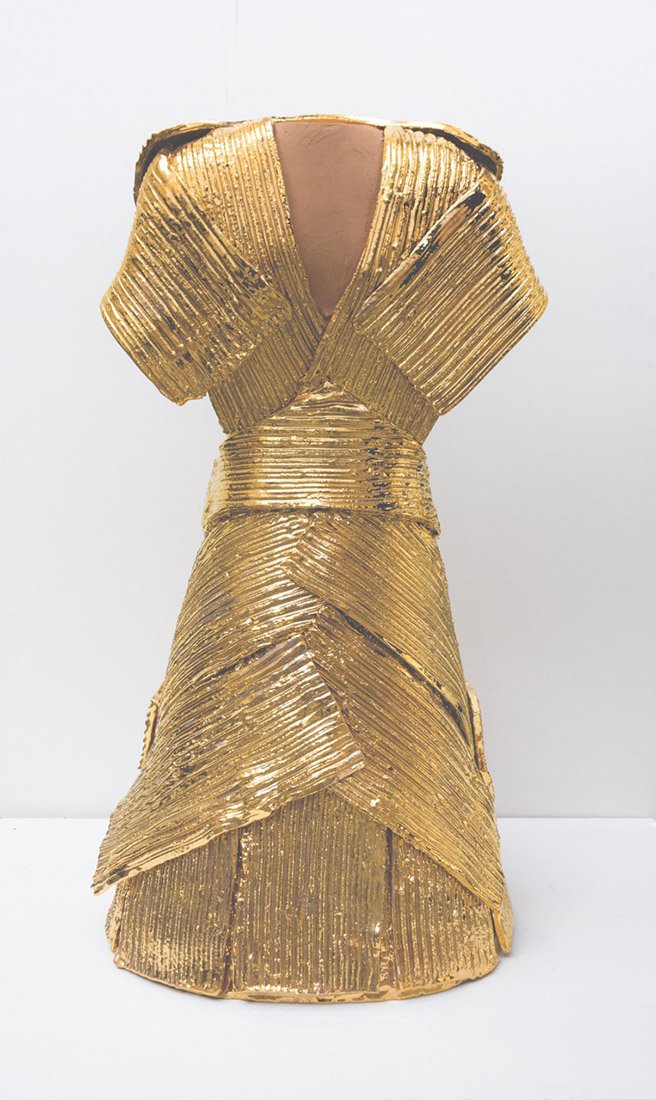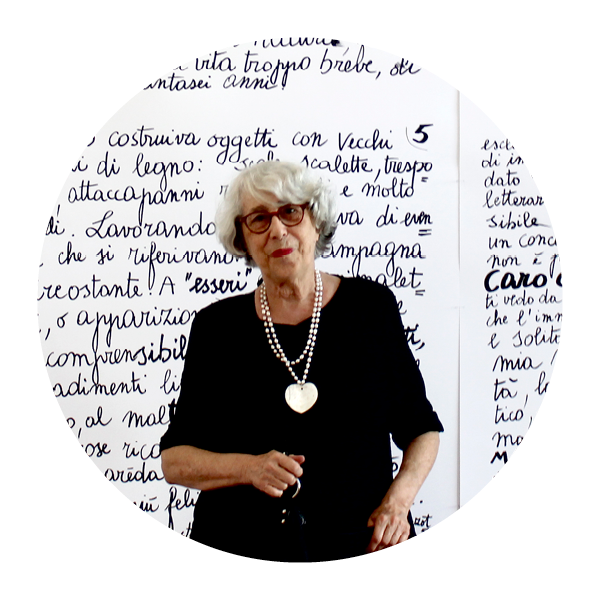FAVENTIA – 11/12. Giosetta Fioroni
12.11.2024 – 11.12.2024
From November 12th, 2024, to December 11th, 2024, BUILDINGBOX hosts the sculpture Murasaki (2006) by Giosetta Fioroni (Rome, 1932).
The sculpture belongs to the cycle of the Clothes [Vestiti], pieces that Fioroni dedicates to some of her favorite “literary heroines” evoking, by means of clothes and colours, their identity and destiny.
Following an extensive production in ceramics that has seen the artist dealing with Teatrini e Case [Little Theaters and Houses] (deriving from memories of childhood games), Steli [Stems] and Alberi [Trees], Scatole [Boxes] and Formelle [Tiles] (where the verses of authors such as Sandro Penna, Goffredo Parise, Wystan Hugh Auden also appear), the Clothes are inspired by the protagonists of books written by Johann Wolfgang von Goethe, Theodor Fontane, Ippolito Nievo, and Robert Musil. “They are thought of as standing dresses, with “choppy” clay and hyper-pictorial in their ceramic colouring. Simply motionless in deportment,” says the artist. Conceived in stylized, archaic forms, they allude to headless, female bodies with missing limbs, and bring to mind legendary characters, ancient fairy tales and modern women.
Murasaki, the artwork shown here, refers to the legendary Japanese writer and lady-in-waiting who lived between the 10th and 11th centuries. In her best-known book – The Tale of Genji – Murasaki Shikibu describes the court life of her time, including ceremonies, intrigues, romance, and betrayals. The author was skilled in writing and music, knew in great detail the rules of behavior and court games, and her influence lives on in nō theater and inspires Japanese art and beyond. Murasaki is not the real name of the writer, but a nickname; she was called in this way because she loved to wear purple clothes (the term in Japanese indicates the characteristic colour), she was an expert in creating colourful robes with a great talent for reproducing the colours of the season, and she loved to address the female characters in her stories by referring to the colour of their clothes.
Aspects that Fioroni likes to emphasize in the choice of the bright golden kimono with which she “dresses” her heroine, allowing us, with it, to enter a fantasy world, so far away, so well evoked by both the writer and the artist.
From January 12th, 2024, to January 11th, 2025, BUILDINGBOX presents FAVENTIA. Ceramica italiana contemporanea [Contemporary Italian Ceramics], an exhibition project curated by Roberto Lacarbonara and Gaspare Luigi Marcone, involving twelve Italian artists invited to exhibit sculptures and installations made of ceramics. This programme is dedicated to the centuries-old artistic tradition of the city of Faenza, one of Italy’s main production districts, as well as the seat and epicentre of themed projects and museums such as the “MIC International Ceramics Museum”, the “Premio Faenza”, and the “Museo Carlo Zauli”. Furthermore, the exhibition was conceived as a tribute toward an area affected by the flood of May 2023.
As with BUILDINGBOX’s usual annual schedule, the exhibition hosts monthly interventions. In this edition, the artworks will be presented on the 12th day of each month. This “numerology” alludes to the cyclical nature and synthesis of earthly, spiritual, and temporal elements, as well as the numerous symbologies associated with the number 12 in history and cultures from different parts of the world.
The project maps and summarises some of the main artistic expressions related to the 20th and 21st centuries ceramics, promoting a series of artists from different generations who, consistently or sporadically with respect to their own production, use clay working techniques by continuing, recovering, or revolutionising the extraordinary manual skill of moulding, and the chromatic-luminist value of the glazes.
The ancient Faventia has been a land of artisan production since Roman times, a characteristic that was enhanced in later centuries. Indeed, it became synonymous of the majolica ceramics in many languages – French (faïance), English (faience). In recent years, many artists have used the Faenza kilns – also thanks to residency programmes, exhibitions, workshops, prizes, and publications – for the artistic production of medium and large-scale sculptures, often designed for an environmental development and installation purposes. The primal, demiurgic act of shaping the clay gives ceramics an exclusive status, almost an ontology, the auroral condition of sculpture. In the manipulation’s plastic immediacy that precedes the firing that crystallises the piece, there is all the naturalness of a slow, thoughtful transformation poised between design and chance. In ceramics, as in drawing, there is the seed of an origin, that appears on the surface of the image and things in the precise moment of their conception. Ceramics – beyond the categorisations between craft, art, functional objects, unique, or mass-produced piece – possesses an intermediary (or intermediality) between thought and gesture, sign and sculpture, form and colour, operating, moreover, with various natural elements such as earth, water, and fire; and by hybridising artistic languages, techniques, research, and knowledge between artists and artisans.



